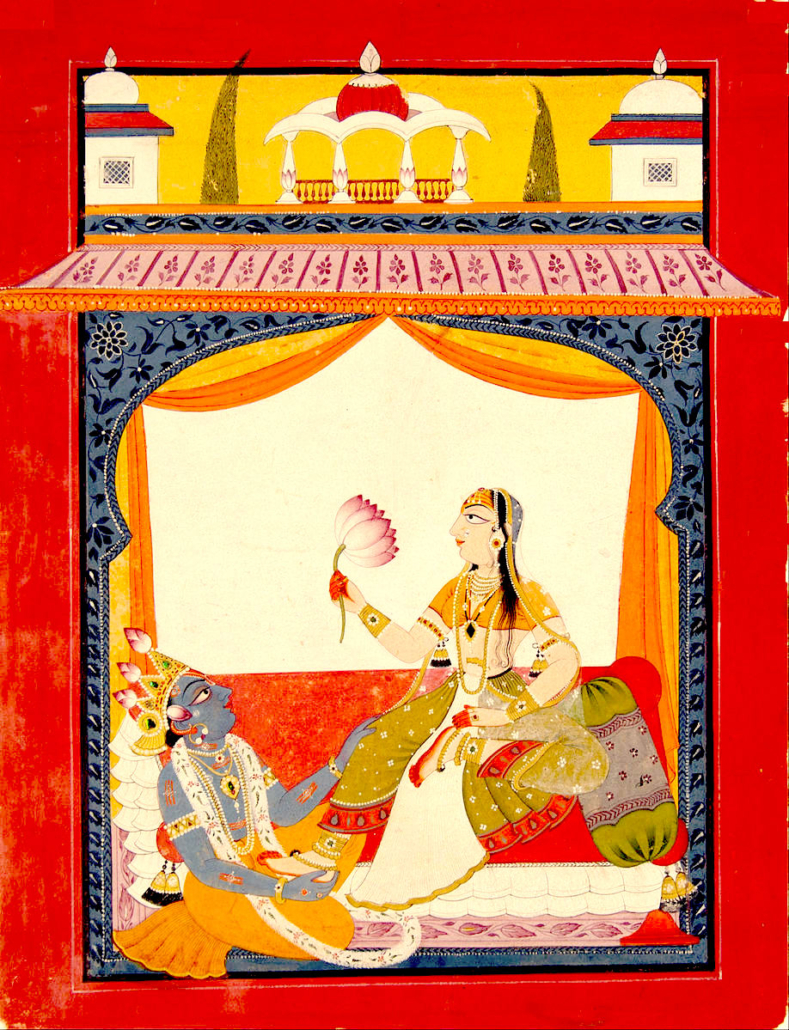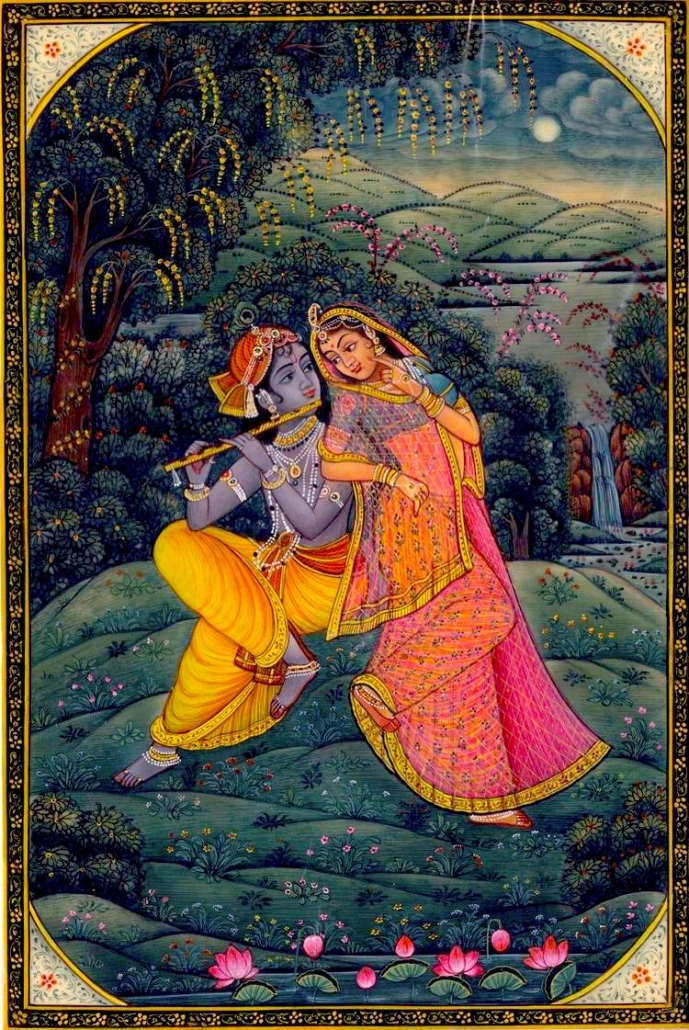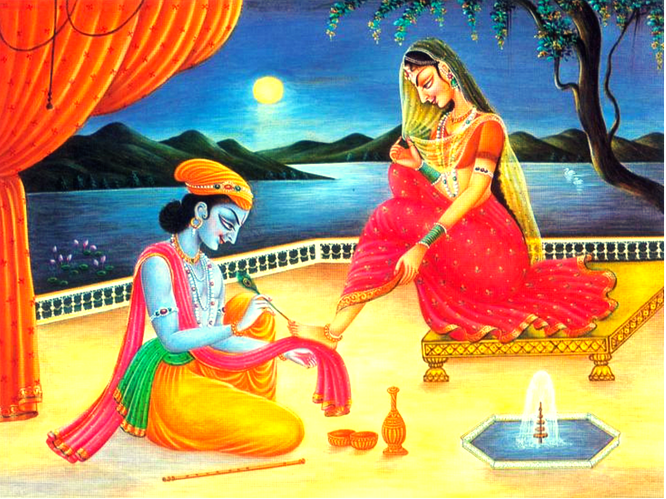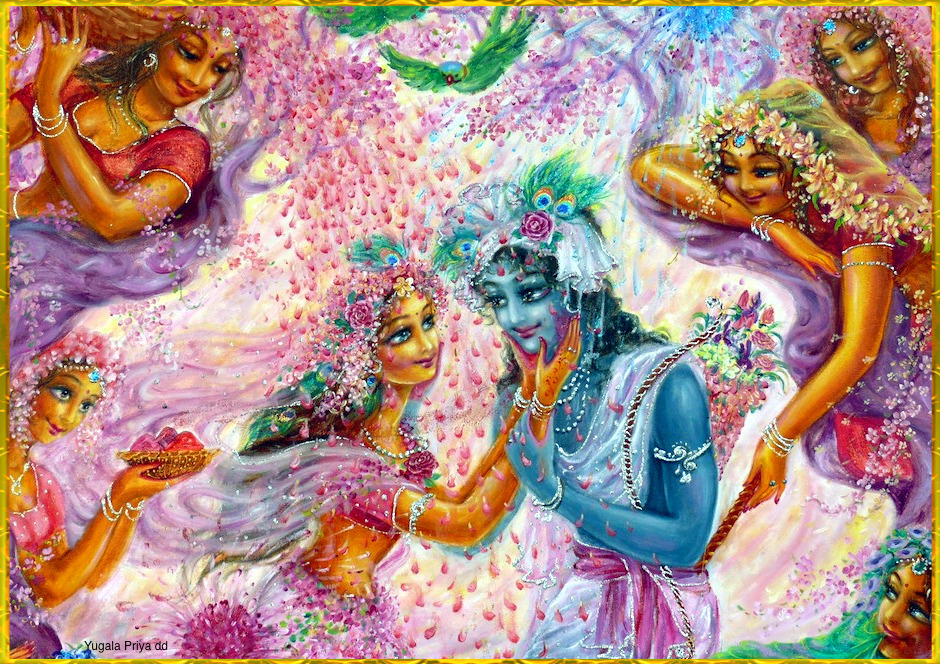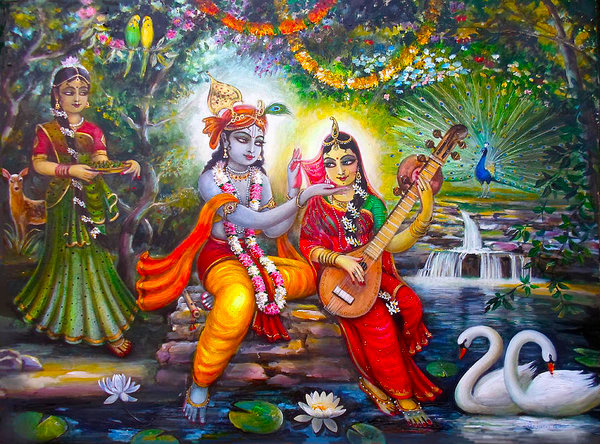Mahanidhi Madan Gopal Das
This series of posts will present facts (tattva) regarding the identity, moods (gopi-bhava), intimacy and sevas of Srimati Radharani’s beautiful and talented handmaidens known as manjaris, kinkaris, or dasis.
Also we will present many astonishing and wonderful lilas to highlight the manjaris most personal and confidential sevas to Srimati Radhika and Her dearest Priyatama Shyamasundara.
The information here is based on the commentaries of Advaitavamsa Acharya 108 Sri Ananda Gopala Goswami and 108 Sri Ananta Dasa Babaji Maharaja taken from “Vilapa Kusumanjali” and “Radha Rasa Sudhanidhi” translated by Sri Advaita Dasji.
Manjari Tattva: Desiring the Unattainable
Although Sri Raghunatha Dasa Goswami understands that he desires something which is hard to attain, he cannot give up hoping. “O Radhika! I see that I’m unworthy, yet my mind is still greedy for Your attributes.”
Although he sees that he’s completely unqualified, his mind is still illuminated by the hope for getting Radha-Madhava’s sweet mercy.
In Utkalika-vallari (34-35), Sri Rupa Goswamipada says, “O Radha-Krishna, King and Queen of Vrndavana! Although the greatest souls are not able to get Your darsan for even a moment, this fallen soul desires it, swallowing all fear and shame! But what is my fault in this? Who will not be intoxicated by the ever-fresh sweetness of Your qualities?”
Manjari Tattva: Radha’s Krishna
The acaryas teach: “We must see Shyamsundara from Radharani’s perspective and Radharani from Shyamsundara’s perspective.” Sri Krishna bestows welfare on the world and Kalyani Radha embodies Krishna’s welfare.
Once to inform Radharani about how intensely Krishna is hankering for Her, Visakha-sakhi said, “O Shyama Ju! When Subala gives Krishna a garland of golden Campaka-flowers, His mind trembles and tears of passionate love flow from Krishna’s eyes. O Sundari! Your form always awakens great love in Shyam’s heart!”
“Shyam can only pronounce the first syllable of Your name, ‘Ra’, but out of ecstasy Krishna cannot pronounce the other one, ‘Dha’. Krishna eyes cry streams of tears. That jewel of men rolls on the ground; who can describe Govinda’s distress?”
Sri Krishna bestows auspiciousness on the world, but Srimati Radhika bestows auspiciousness even on Krishna. Sri Govinda considers Himself blessed when He attains Radhika’s company. Krishna feels that His world is empty without Radha, and Radha feels the same towards Krishna.
Sarvanga-sundari is the Queen of the kunja, who excites eagerness in Shyam to enjoy. It’s as if Madhava is a beggar getting a meal in the royal palace.
Manjari Lila: Radha Kicks Her Manjari
In his spiritual identity of Tulasi-manjari, Sri Raghunatha Dasa Goswami brings Radha and Krishna together in a lonely kunja on the bank of Radha-kunda. How expertly Radha-Madhava sweetly play! Vrndavaneshvari fulfills desires that Krishna could never even dream of! Tulasi witnesses all of Radha-Madhava’s sweet pastimes through a hole in the kunja wall.
Afterwards, the enchanted Shyam sits at Swamini’s feet, staring at Kishori’s sweet face with unblinking eyes. Understanding that her time to serve has come, Tulasi enters the kunja. Krishna holds Srimati’s lotus feet to His chest and is stricken by symptoms of ecstatic love, and tears of love flow from Shyam’s eyes.
His chest is moistened with sweat drops, so that the fragrant powder on Krishna’s chest starts sticking on Swamini’s footsoles. Seeing this, Tulasi giggles, covering her mouth with her hand. Seeing her laughing, Swamini kicks the fortunate Tulasi with Her foot, so that the fragrant powder from Krishna’s chest adorns Tulasi-manjari’s head, making it worthy to be called her best and highest limb (uttam-anga).
Indeed, Tulasi is a most fortunate manjari. Just hearing this lila makes the sensitive sadhaka rejoice over the wonderful loving intimacy between Srimati Radhika and Her loyal dasis like Tulasi. O will I, even in my dreams, experience the tender touch of Sri Radha’s sweet feet sprinkled with the rasa-filled red vermillion from Shyam’s love anointed chest?
Radharani manjaris ki jai! Jai Jai Sri Radhe!

